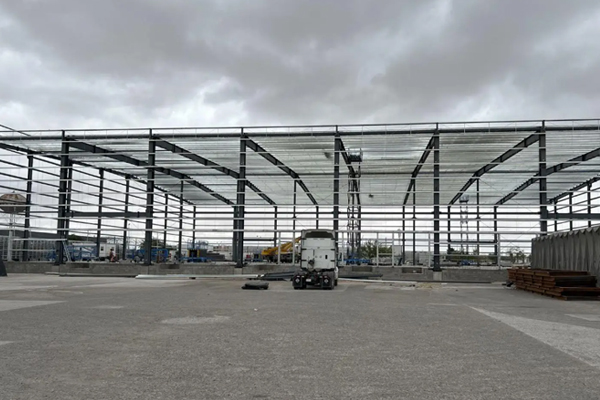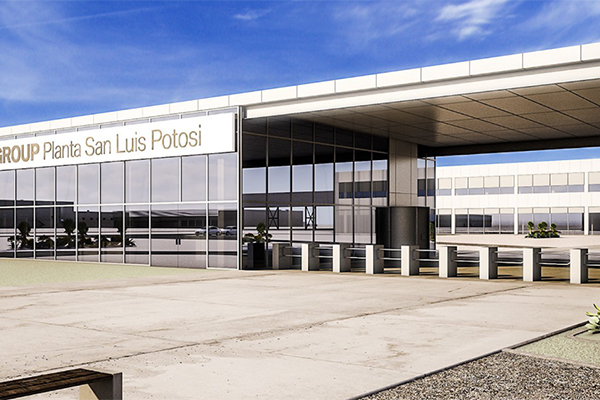News
Building a factory in Mexico: How do users evaluate market potential?
Evaluating market potential is key to ensuring investment return and long-term success during the process of building a factory in Mexico. Users need to consider multiple factors comprehensively to assess the attractiveness and future development potential of the Mexican market. Here are several key factors that users should focus on when evaluating the potential of the Mexican market:
1、 Economic environment and growth potential
GDP growth and economic stability
The economic growth rate of Mexico is one of the fundamental indicators for evaluating market potential. Continuous GDP growth indicates that the national economy is in a healthy state, which is conducive to an increase in consumer demand and industrial expansion.
Users will pay attention to Mexico's GDP growth rate in the past few years, as well as predicted economic growth trends, to evaluate the long-term potential of the future market.
Government policies and economic reforms
The economic policies and reform measures of the Mexican government, especially those related to foreign investment, taxation, labor market, infrastructure construction, etc., will directly affect the market potential.
Users should pay attention to whether the Mexican government has policies that support industrial development, such as tax incentives, export subsidies, industry support, etc., as well as whether the government implements open market access policies to encourage foreign investment.
2、 Industry development and demand
Market demand of target industry
When choosing Mexico as the location for factory construction, users first need to analyze the market demand situation of the target industry. We need to evaluate the demand, consumer acceptance, and future growth potential of this industry in Mexico.
For example, if planning to establish a manufacturing factory in Mexico, it is necessary to assess the manufacturing demand in the region and whether there is sufficient local or export market demand.
Industry competition situation
Users also need to evaluate the competition situation in the same industry in the Mexican market, understand existing competitors, market share, and the degree of competition.
By analyzing the strengths and market positioning of competitors, users can identify their opportunities to enter the market and find differentiated positioning for their products or services.
Potential market size
Assessing the potential size of the target market is also crucial, especially in determining whether the target market is large enough to support the investment and long-term development of new factories.
Users can obtain estimates of potential market size, understand market capacity and expansion space through market research, industry reports, government released data, and other means.
3、 Labor Market and Production Costs
Labor cost and skill level
Mexico's low labor costs have attracted a large number of foreign companies to invest in building factories. Users need to evaluate the cost advantage of local labor and determine whether it meets the operational needs of the factory based on their skill level.
For example, some regions in Mexico may have abundant low-cost labor, while others may have the advantage of higher skilled workers, suitable for certain high-end manufacturing industries.
Labor supply and talent recruitment
In addition to labor costs, the supply and quality of labor are also crucial. Users need to analyze the labor market in the target region, understand whether there are sufficient personnel to support production needs, and whether local education and training resources can meet the requirements of enterprises for skilled workers.
In some industrial centers in Mexico, such as Monterrey and Guadalajara, there may be more skilled workers, while other regions may focus more on basic occupations.
4、 Infrastructure and Logistics
Transportation and logistics network
Mexico's geographical location makes it an important hub connecting the American market, with a well-developed network of ports, railways, and highways. Users need to evaluate the transportation convenience of the target area and whether it can smoothly transport raw materials and finished products.
Users also need to consider the distance from major consumer markets such as the United States, Canada, and other Latin American countries, as well as the convenience of cross-border transportation, especially trade with the United States.
Energy supply and cost
Energy costs account for a significant proportion in the production process. The electricity and natural gas supply situation in Mexico directly affects production costs, therefore, users need to understand the energy supply situation, energy prices, and sustainability of the target area.
Some regions have sufficient energy supply and lower costs, while others may face energy shortages or price fluctuations, which is crucial for users' cost assessment.
5、 Market Access and Legal Environment
Trade Agreements and Free Trade Zones
Mexico is a member of the North American Free Trade Agreement (NAFTA, now known as USMCA) and has close economic relations with the United States and Canada. Through these trade agreements, Mexican companies can enjoy preferential policies of zero or low tariffs, especially in manufacturing and export-oriented industries.
Users need to evaluate whether they can utilize the free trade agreements between Mexico and other countries to reduce export costs and improve the market competitiveness of their products.
Legal and tax environment
The legal environment and tax policies in Mexico have a significant impact on foreign investment. Users need to pay attention to Mexico's business registration, tax policies, foreign investment policies, environmental regulations, labor laws, etc., to ensure compliance with local legal requirements.
Users can collaborate with local law firms or consulting firms to understand the legal risks associated with foreign investment and ensure compliant operations.
6、 Social and political environment
Political stability and social environment
When evaluating the potential of the Mexican market, users also need to pay attention to the political stability of Mexico. Political instability may affect the investment environment and increase operational risks for businesses.
For example, whether there are factors such as government changes, social unrest, and trade union movements that may affect enterprise production and logistics. In addition, security issues in Mexico are also an important factor for some businesses to consider.
Social Consumption Trends and Culture
Understand the behavioral habits, preferences, and purchasing power of Mexican consumers to help businesses evaluate the long-term development of the market. With the rise of the middle class, Mexico's consumer market is expanding, especially in industries such as consumer goods, electronics, and automobiles.
Users can obtain more information about the needs and cultural habits of Mexican consumers through market research, providing support for product positioning and market promotion.
7、 Summary
When building a factory in Mexico, key factors for users to evaluate market potential include economic environment, industry demand, labor market, infrastructure, legal environment, and political stability. By considering these factors comprehensively, users can assess the attractiveness and investment feasibility of the Mexican market, and choose the most suitable location and development strategy for their production base. This not only helps ensure smooth short-term operations, but also lays a solid foundation for the long-term development of the enterprise.





